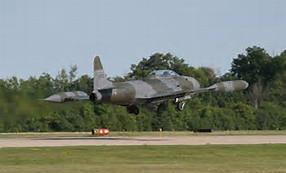S'sonic
Stealth
Menu
A free template by Lucknowwebs.com for WYSIWYG WebBuilder 8
Powered by Sispro1-S
Nigel G Wilcox
Paragon Of Space Publication
© Copyright Reserved - United Kingdom
Ideal Screen Composition 1024 x 768
SITEMAP
PSEUDO SCIENCE
SCIENCE RESEARCH
ABOUT
Desk
Supersonic
Stealth
Study
Menu
MAIN INDEX
Fastest Air Planes
Space
Transport
Menu
http://military.wikia.com/wiki/SEPECAT_Jaguar?file=Cockpit_of_Jaguar_GR.3A.jpg
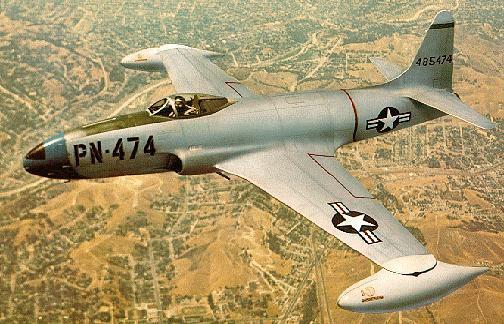
The Lockheed P-80 Shooting Star was the first jet fighter used operationally by the United States Army Air Forces. Designed and built by Lockheed in 1943 and delivered just 143 days from the start of the design process, production models were flying, and two pre-production models did see very limited service in Italy just before the end of World War II. Designed with straight wings, the type saw extensive combat in Korea with the United States Air Force as the F-80. America's first successful turbojet-powered combat aircraft, it helped usher in the "jet age" in the USAF, but was outclassed with the appearance of the swept-wing transonic MiG-15 and was quickly replaced in the air superiority role by the transonic F-86 Sabre. The F-94 Starfire, an all-weather interceptor on the same airframe, also saw Korean war service. The closely related T-33 Shooting Star trainer would remain in service with the U.S. Air Force and Navy well into the 1980s, with the last NT-33 variant not retired until April 1997. Many still serve in a military role in foreign air arms or are in private hands.
Maximum speed: 965.61 km/h (600 mph) Range: 999.79 mi Maiden flight: 10 Jun 1944 Length: 34.42 ft Wingspan: 38.75 ft Designer: Clarence Johnson
F-80 Shooting Star
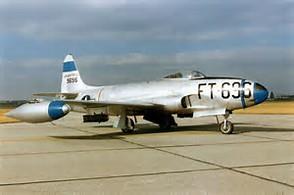
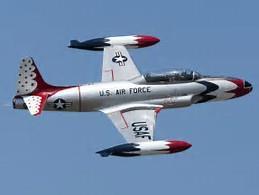
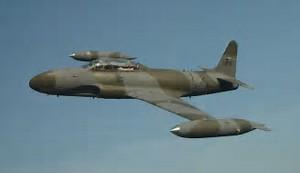
The Shooting Star was the first U.S. Air Force aircraft to exceed 500 mph in level flight, the first American jet airplane to be manufactured in large quantities, and the first USAF jet to be used in combat.
Lockheed XP-80 prototype S/N 44-83020, nicknamed Lulu-Belle
Designed in 1943 and designated the XP-80, the prototype painted green made its maiden flight on January 8, 1944. The next prototypes were classified as XP-80A aircraft, followed by the YP-80A pre-production planes.
The initial production order was for 344 P-80As after USAAF acceptance in February 1945.
Like most early jets designed during World War II, and before the Allies captured German swept wing research data which showed the promise of much greater speeds, the XP-80 had straight wings similar to previous propeller-driven fighters. It was also unique in that its engine was mounted in the fuselage.
The F-80C was used extensively as a fighter-bomber in the Korean Conflict, as was the RF-80, the photo recon version.
A total of 1,715 F-80 Shooting Stars were manufactured. Variants included the T-33 trainer and the F-94 Starfire.
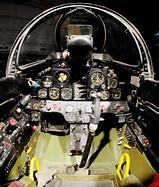
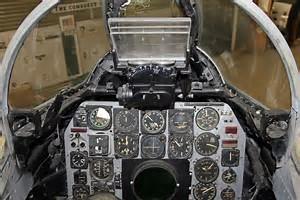
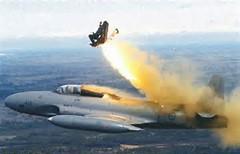
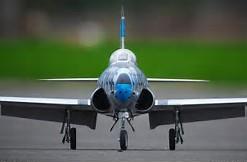
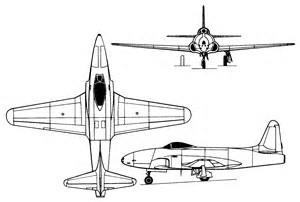
Role: Jet fighter
National origin: United States
Manufacturer: Lockheed Corporation
Designer: Clarence "Kelly" Johnson
First flight: 8 January 1944
Introduction: 1945
Status: Retired
Primary users: United States Air Force
United States Navy
Number built: 1,715
Unit cost: US$110,000 in 1945
Variants: Lockheed T-33 Shooting Star
Developed into: Lockheed F-94 Starfire
General characteristics
Crew: 1
Length: 34 ft 5 in (10.49 m)
Wingspan: 38 ft 9 in (11.81 m)
Height: 11 ft 3 in (3.43 m)
Wing area: 237.6 ft² (22.07 m²)
Aspect ratio: 6.37
Empty weight: 8,420 lb (3,819 kg)
Loaded weight: 12,650 lb (5,738 kg)
Max. takeoff weight: 16,856 lb (7,646 kg)
Zero-lift drag coefficient: 0.0134
Drag area: 3.2 ft² (0.30 m²)
Powerplant: 1 × Allison J33-A-35 centrifugal compressor turbojet, 4600 lbf (20.46 kN) / 5400 lbf (24.02 kN) with water injection
Performance
Maximum speed: 600 mph, Mach .76 (P-80A 558 mph at sea level and 492 mph at 40,000 ft)[8] (965 km/h)
Cruise speed: 410 mph (660 km/h)
Range: 1,200 mi (1,930 km)
Service ceiling: 46,000 ft (14,000 m)
Rate of climb: 4,580 ft/min (23.3 m/s) 5.5 min to 20,000 ft (6,100 m)
Wing loading: 53 lb/ft² (260 kg/m²)
Thrust/weight: 0.364 (0.427 with water injection)
Lift-to-drag ratio: 17.7
Armament
Guns: 6 × 0.50 in (12.7 mm) M3 Browning machine guns (300 rpg)
Rockets: 8 × 127mm unguided rockets
Bombs: 2 × 1,000 lb (454 kg) bombs













